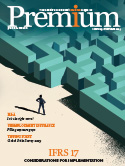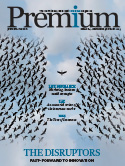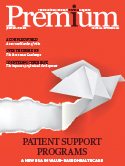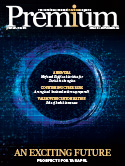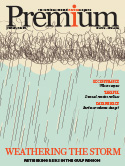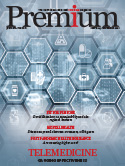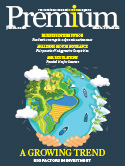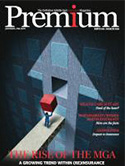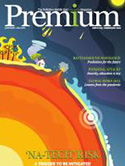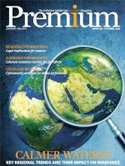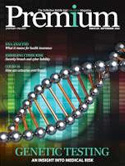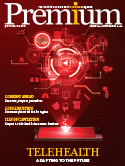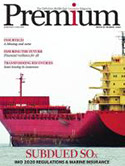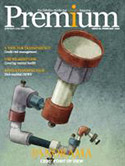A New ERM

AM Best lists the top global risks for the insurance industry, which have raised the need for emerging risk management.
The insurance industry is introduced to risks everyday, some of which may have already been in existence but gained in severity, while others are new to the portfolio, according to AM Best’s report titled ‘The Growing Importance of Emerging Risk Management’. An increasingly interconnected and uncertain global economy is facing the impacts of a number of factors, among them:
- Climate change, evidenced by increased weather volatility and creating catastrophic losses due to flooding, hurricanes, wildfires, and droughts;
- A connected world in which cyber risks proliferate and businesses and consumers may be at high risk from systemic failure of connectedness;
- Low interest rates across the globe and expansionary monetary policy that has limited the ability of central banks to counter any future crisis and;
- Government protectionism and reconfiguration of global trade contracts.
These factors, along with changing demographics and technology, have elevated the importance of emerging risk management as an essential part of the Enterprise Risk Management (ERM) toolkit. Insurers need to continually scan the ecosystem for risks, quantify the impact of emerging risks, and be proactive in designing mitigation plans in the event that these risks manifest themselves.
Many of the risks for which insurers are less prepared—such as climate change, cyber, and pandemic—may materialise relatively quickly and have a substantial impact on claims. These kinds of risks require proactive underwriting, pricing, concentration risk management and reinsurance strategies that are consistent with the organisation’s risk appetite. Other risks—such as social inflation—may emerge over a longer period. These emerging trends require operational readiness, prudent reserving, and expedient responses. Preparedness will become ever more critical as these risks emerge more fully and their impact becomes apparent.
Emerging Risks
Climate Change
For many, climate change is the biggest risk for insurers. With the frequency and severity of weather-related events on the rise, insurers have been severely impacted by related losses. Pricing for these natural disasters based on past experience is challenging, as catastrophe models have not yet fully considered the new normal. Insurers and reinsurers have had to re-examine their pricing, exposure management, and reinsurance/retrocession strategies. Because of low yields and a lack of correlation with the broader equity and credit markets, the capital markets’ appetite for catastrophe risk remains healthy. However, this could reverse if interest rates were to rise. For primary insurers with concentration risks, climate change can challenge their business models, given that these carriers are at the mercy of reinsurance pricing.
Climate change poses concerns for reinsurers but can also create demand for additional reinsurance. This phenomenon can also challenge (re)insurers through litigation. As environmental impacts become more severe and the resulting economic losses more apparent, entities deemed to contribute to climate change may be subject to legal liability.
Cyber
Cyber insurance growth is being driven by organisations wanting to minimise their cyber and reputational risk, as well as protect their balance sheets and bottom lines. In addition, regulations such as General Data Protection Regulation (GDPR) in Europe and similar privacy laws are enacted (such as in California and New York), will cause additional demand. Although data breach is the most common reason for the growth in demand, companies are also concerned about business continuity and property damages, given that viruses and hackers are becoming increasingly sophisticated and could cause huge losses.
Insurers continue to make cyber coverage more explicit, owing to the rising risk of loss from silent cyber coverage, as recent ransomware incidents have painfully clarified to insureds and insurers alike. Cyber liability embedded in coverages such as Directors & Officers Liability is another emerging issue.
The growth of cyber risk provides P/C insurers and reinsurers with opportunities as they have the ability to create the market, as well as to serve (along with brokers) as effective risk managers to insureds in assessing clients’ cyber landscape, price the cyber product commensurate with the risk, and be an effective partner in advising loss-mitigation techniques. The evolving nature of the risk makes pricing a challenge as well. Despite the positive potential for cyber insurance, reinsurers must examine the aggregation risk as they determine their risk appetite. Reinsurers should be engaged partners in cyber risk underwriting, given that they need to fully understand the scope and potential of the risks they are assuming and should not “give away their pen” completely and supplement their partnership with underwriting audits.
Cyber risk is a well-established risk for health insurers—a number of high-profile cyber attacks have already taken place against health insurers, such as Anthem. Furthermore, these attacks are increasing in frequency and levels of sophistication. As part of their operational risk management initiatives, health insurers have been expanding their emphasis on cyber security and preventive measures. However, they will need to continually update their systems and security measures.
Market/Economic/Financial
Volatility stemming from trade disputes and a slowdown in global economic growth can dampen not only insurers’ investment income, but also the earnings results of companies offering variable products (particularly those with large amounts of business in spread-based products), as well as hedging costs.
The current geopolitical, interest rate, and equity market environment offers increased potential for more economic volatility.
Property/casualty insurers and reinsurers understand the high-severity nature of their liabilities, as well as the reserve risk on their balance sheets, and tend to be risk-averse on the asset side of their balance sheet. As a result, fixed-income instruments constitute a major portion of their investments, and these insurers thus tend to have more conservative risk profiles. However, a predominantly fixed-income portfolio in a prolonged low-interest rate environment has led to a declining investment income contribution to the overall bottom line.
Although health insurers rely less on interest and equity returns to meet future liabilities, the low interest rate environment has also affected their operations with regard to debt issuances. Because interest rates remain low, many health insurers have issued large amounts of new debt to finance M&A and extinguish older debt obligations.
Advancements in Technology
As technology has evolved, consumers have seen a proliferation of IoT (Internet of Things) devices. Automobiles have sensors that can sense blind spots and issue lane departure warnings. Telematics devices help insurers monitor drivers’ behavior and determine correlations among driving traits, road conditions, and accidents.
The growing prevalence of IoT sensors allows real-time monitoring of homes and autos. Homeowners can be alerted to potential issues with their water heaters, water pressure, and gas leaks, and prevent accidents or severe damages to their homes. Blockchain has been making gradual inroads in the P/C segment. Title insurers, for example, are looking at blockchain to automate due diligence in the underwriting process.
Advances in medical diagnostics may be beneficial for health insurers, allowing for earlier detection of medical conditions, as well as the delivery of more proactive care. However, early detection may lead to an increase in benefit triggers for insurers of critical illness. Along with the increase in claims frequency and severity, the rapidly rising cost of care and the rarity of shock claims make their impact difficult for insurers to quantify. This has prompted employers and insurers alike to explore methods such as stop-loss and reinsurance to mitigate the impact of these claims.
Most of the innovation in the life insurance industry remains focused on developing front-end sales, with customer need considered the primary reason to innovate. This narrow focus can cause some L/A insurers to fall behind the curve on innovation and digital technology, which can lead to lost opportunities for developing new business, improving the client experience, and gaining a competitive advantage.
Legacy IT Systems
Many insurers still rely heavily on outdated legacy systems that need to be updated or replaced, but they are unable to do so because of organizational cultures or the lack of capital, whether human or financial. Updating or replacing legacy IT systems is a cumbersome and prohibitively expensive process for all insurers. Older systems can result in lost opportunities and cause companies to fall behind their peers. Using improper legacy systems may preclude insurers from exploiting the latest technologies such as the power of cloud computing, predictive analytics etc.
However, transitioning from these systems, although expensive, can provide a host of benefits, as upgrades can not only improve and expedite internal operations, but also enhance the customer experience. Some firms are electing to completely replace their legacy systems, since upgrading can be a more time-intensive endeavor.
Legislation and Regulation
Insurance has been a highly regulated industry and is likely to remain so. A large number of stakeholders have influence in regulating insurance company operations, pricing and reserving, capital management, and reporting and disclosure. The evolving legislation surrounding genetic testing and the ethical use as well as social disclosure is something that will impact health and life insurance. Other legislation such as the introduction of principle-based reserves, NAIC’s Regulation 27f and the IFRS 17 accounting standards are other requirements that will influence the operations of insurers.
Infectious Diseases
Health insurers constantly track treatment patterns, including prescription drug usage, provider visits (primary care, urgent care, and emergency room) and in-patient hospitalisations for any changes or upticks in utilisation; they also look for patterns that may indicate an increase in treatments for specific conditions, whether something as simple as a strain of the flu or more serious such as the coronavirus.
Environmental, Social, and Governance (ESG)
Increasingly, the decision to invest in or divest from a company is being based not only on its financial performance, but also on its environmental, social, and governance impact, which has led to the development of ESG criteria.
These concerns can affect insurers directly, based on their own ESG performance as well as that of the companies in which they invest or for which they provide insurance coverage, and could thus have a material impact on financial performance. As a result, insurers and reinsurers are increasingly focusing on incorporating ESG practices into their investment and underwriting decision-making processes.
Political
Several political risks are of concern to insurers—among them, trade protectionism, social unrest, policy uncertainty, and the rise of nationalism and terrorism. These concerns can lead economic volatility, which hurts investment performance of insurers, economic instability, greater sovereign risk and sometimes even violence through terrorism. Severe property damage, business interruption and loss of business are other impacts.
Demographic Changes
The increase in the average age of the workforce has resulted in less favorable risk pooling, which has raised costs for employers and may be contributing to the rise in self-insurance rates. This has led to challenges about controlling the cost of care and remaining competitive. Some insurers are exploring writing alternative products, such as stop-loss insurance, to hedge the loss of business from the rise in self-insurance.
The workforce continues to age and retire, leading to an experience gap, given the limited workforce participation rates among younger employees in the insurance industry. Failure to attract or retain new talent as retirees exit the industry leaves carriers with a huge talent gap. Moreover, the nature of employment has also evolved. More individuals are employed in gig economy jobs, insuring these kind of workers, who typically do not have employer provided insurance, will be both a challenge and an opportunity.
Emerging Risks
Emerging risks differ for the various insurance segments. P/C insurers consider social inflation, climate change, cyber, and terrorism their chief concerns. L/A insurers see finance (interest rates, equity market volatility) and demographic changes (longevity and mortality) as their top risks. Health insurers consider public health issues in the context of legislation and regulation, the cost of care, and demographic changes their top risks. And reinsurers consider increases in claims frequency and severity stemming from climate change and cyber events, as well as legislation and regulation, their top risks.








